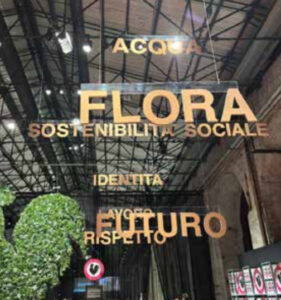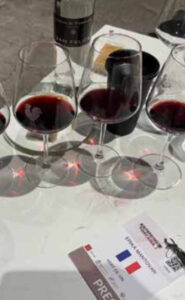Tradition, quality, and sustainability as the key pillars for the future

On February 17th and 18th, the 32nd edition of the Chianti Classico Collection took place – an unmissable event for both the Italian and international wine scenes. With 218 participating wineries and 790 wines available for tasting, the event recorded -breaking attendance, a testament to the strength of the denomination and the vitality of the region, despite challenges stemming from geopolitics and climate change.
A vintage marked by sustainability
The year 2024 proved to be one of consolidation for the DOCG. Sales remained steady, holding at an annual volume of 35 million bottles. However, the most notable performance was in terms of value: Riserva and Gran Selezione accounted for 43% of production but 54% of revenue, indicating that quality is being increasingly recognized. In particular, Gran Selezione continues to shine in premium markets such as the UK, where average prices have surpassed €35 per bottle.
At the heart of the event’s conversations was not only the quality of the wines but, above all, the environmental, social, and economic sustainability of the region. In celebration of the DOCG’s centenary, the Chianti Classico Wine Consortium unveiled its Sustainability Manifesto, a framework of 58 criteria that lays out a path toward a more biodiverse, landscape-preserving, and community-supporting model of agriculture.
Chianti Classico is not just wine but also olive oil
Not just wine. At the 2025 Collection, Chianti Classico DOP Extra Virgin Olive Oil also took center stage, celebrating its 50th anniversary of protection and promotion with a 30–40% increase in production compared to 2023 and consistently high-quality standards. This emphasized the return to the core of Tuscan agrarian tradition—wine and olive oil – mainly two products of excellence that share values of territorial identity and sustainability.
The vintages: 2024, 2023, 2022, and 2021
The first impressions of the 2024 vintage are positive: a regular vegetative cycle, aided by a mild winter and cool summer, led to balanced phenolic ripening, producing elegant, fresh wines with moderate alcohol levels—evoking the great vintages of the 1990s. The 2023 vintage was more challenging, marked by spring rains that encouraged the spread of downy mildew, causing a drop in production. Despite this, some wines surprised with their clarity of aroma, good structure, and immediate charm, showing promising potential for development.
The 2022 vintage, described by many as “the hottest year ever recorded in Tuscany,” posed a tough test for producers. High temperatures and drought required crucial decisions in the vineyard, resulting in mixed outcomes: while some wines lack depth and show alcohol imbalance, others reveal a surprising freshness and balance.
By contrast, 2021 stands out for its greater harmony. A “signature” year that allowed for stylistic freedom, resulting in wines that are both austere and complex, combining structure with drinkability. Among them are hidden gems destined to endure.
Spotlight on Gran Selezione: the pinnacle of Chianti Classico premium wine
Particular focus was placed on Gran Selezione, the category that best represents Chianti Classico’s qualitative ambition. The rules are strict: only estate-grown grapes, at least 90% Sangiovese, with the remaining 10% made up exclusively of indigenous varieties, and a minimum aging period of 30 months (at least 3 months in bottle). Since 2020, producers have also been allowed to indicate the UGA (Additional Geographical Units) on the label, further detailing the wines’ origins.
